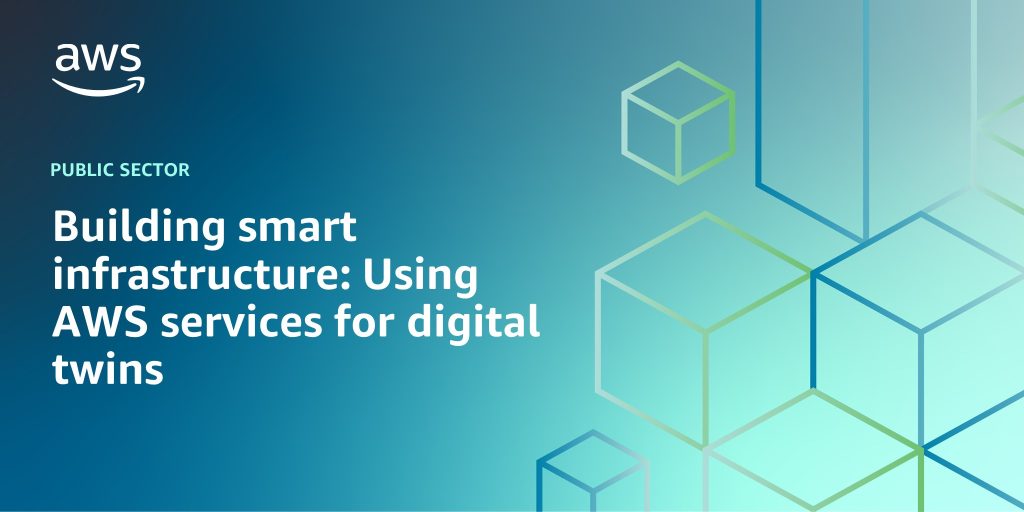AWS Public Sector Blog
Category: Best Practices
Improving public health through data exchange
During and after the COVID-19 pandemic, health agencies stood up new solutions, augmented their epidemiologic data with other data sources, or looked to their local Health information Exchange (HIE) for support. In this blog post, we highlight four states where innovative HIEs are using Amazon Web Services (AWS) to help public health agencies overcome their data challenges.
Supporting security assessors in the Canadian public sector with AWS and Deloitte
In this blog post, learn how Amazon Web Services (AWS) helps Government of Canada (GC) customers move workloads into production in the AWS Canadian Regions. This requires putting their workloads through the Security Assessment & Authorization (SA&A) process and can pose headwinds for GC customers developing applications to support digital modernization efforts.
Meeting mission goals by modernizing data architecture with AWS
In this blog post, learn key AWS concepts and services that can help agencies modernize their cloud and data architecture. First, learn two fundamental concepts that agencies need to examine regardless of their technical approach. Then, discover the AWS services that enable agencies to apply these concepts to meet mission needs.
Evaluating long-term value in migrating ERP and SIS applications to AWS
Organizations can realize significant benefits when migrating their enterprise resource planning (ERP) and student information systems (SIS) to AWS, including reduced costs, fewer security incidents, and improved agility. Education institutions, though, face slightly different decision-making contexts when evaluating which cloud provider to use to host these applications. In this blog post, explore several considerations associated with your decision and the total value that you can realize over a medium and long-term horizon when you migrate ERP and SIS applications to AWS.
StateRAMP on AWS
What do AWS public sector customers need to know about the State Risk and Authorization Management Program (StateRAMP) and how can you use AWS to help meeting StateRAMP requirements? In this blog post, learn a quick recap on what StateRAMP is and how it differs from the similar Federal Risk and Authorization Management Program (FedRAMP).
Migrate and modernize public sector applications using containers and serverless
Many public sector customers are interested in building secure, cost-effective, reliable, and highly performant applications. Technologies like containerization and serverless help customers migrate and modernize their applications. In this blog post, learn how public sector customers use offerings from AWS like AWS Lambda, Amazon Elastic Kubernetes Service (Amazon EKS), Amazon Elastic Container Service (Amazon ECS) to build modern applications supporting diverse use cases, including those driven by machine learning (ML) and generative artificial intelligence (AI). If you want to learn more on this topic, please register to attend the webinar series, Build Modern Applications on AWS.
Building smart infrastructure: Using AWS services for digital twins
In this post, learn use cases for digital twins, plus how to create an open-source digital twin sample front-end application built with AWS Amplify, Amazon Cognito, and AWS IoT Core that you can use as a starting point for building efficient, scalable, and secure digital twin solutions.
Migrating and modernizing state WIC applications with AWS
Public health agencies know that modernizing their technology infrastructure is necessary to avoid disruptions to program operations and create new opportunities to serve their constituents. To this end, the Arizona Department of Health Services (AZDHS) migrated their Women, Infants and Children (WIC) solution to AWS to increase resiliency so essential services are available to WIC beneficiaries, and to provide a more seamless WIC program experience overall. This makes the State of Arizona the first in the nation to run their WIC program in a multi-Region cloud environment with robust disaster recovery capabilities. Learn how the State of Arizona migrated and modernized its WIC program with AWS, and find out more about how public health agencies can adopt a similar solution to take a measured approach to modernization.
Unlock third-party data with API-driven data pipelines on AWS
Public sector organizations often utilize third-party Software-as-a-Service (SaaS) to manage various business functions, such as marketing and communications, payment processing, workflow automation, donor management, and more. This common SaaS landscape can lead to data silos where data becomes isolated in disparate systems and difficult to centralize for business insights. If existing SaaS connectors are not available, public sector organizations can use AWS to build an API-driven data pipeline to consolidate data from SaaS platforms offering open APIs. In this post, learn how to build an API data pipeline on AWS.
Driving people-centered digital transformation in public safety with AWS
Justice and public safety experts spoke in a panel at the IMAGINE 2023 conference for education, state, and local leaders. The panelists explored how the AWS Cloud can facilitate collaboration, connection, and communication to support public safety organizations, and they identified three ways cloud technology can help law enforcement work better internally, in partnership with other organizations, and with the people they serve.









